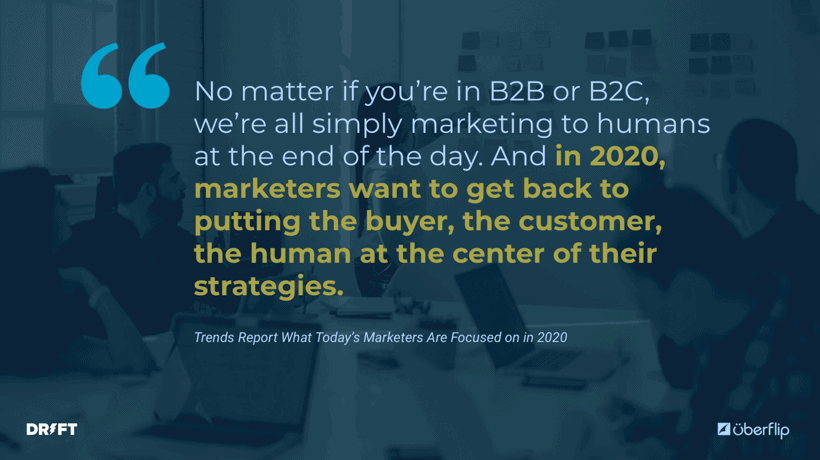
“Kill your darlings, kill your darlings, even when it breaks your egocentric little scribbler’s heart, kill your darlings.”
– Stephen King
Self-editing is – without a doubt – the most difficult challenge for any writer.
And King laid bare the reason why: We all have an ego.
As a content marketer, it’s easy to get attached to the content you create. We all want to be master storytellers. Sometimes we fall in love with our own stories.
So it can be painful when someone tells you that your content isn’t working – and should be put on the chopping block ?
But what if it didn’t have to be so painful?
That’s what we’re going to talk about today. How to recognize and cut content that isn’t helping anyone but you – a process better known as “killing your darlings.”
As an added bonus, I’m also sharing strategies on killing other people’s darlings (without devastating them emotionally) and some bonus content marketing rules to live by.
Let’s get into it ?
How to Kill Your Darlings (& Your Ego)
In writing, darlings are words and concepts we create and become emotionally invested in – so much so that we don’t care if our ideas are clear (or helpful) to our audience.
?And that – right there – is why darlings need to go.
You might be thinking: If self-editing is so hard, why not just leave it to the editors?
There’s no question, having a good editor is invaluable – for those lucky enough to have one.
But if you want to become a better content marketer or a better writer, designer, thinker, or creator, you need to have a critical eye for your own work.
For many of those fields I mentioned, criticism is a part of life. We’ve embedded ourselves in careers that call for it. Still, many of us are rarely taught how to do this with our own work – in a healthy way.
And because we’ve relied on other people to do the critiquing for us – when we do get criticism we disagree with, our reactions can be…less than ideal ?

So how do you become a better critic of your own work? Here are a few places to get started ?
Put the Audience First
There’s a Drift leadership principle that every content marketer should use as a mantra: Put the customer at the center of everything you do.
All the content you create should help your customers or prospective customers.
Every word, every phrase, every paragraph – is it there to help your audience in some way, shape, or form? If not, cut it ✂️

Drift VP of Content & Community, Mark Kilens, wrote a whole blog on how to put the customer at the center of your content marketing ?give it a read.
Identify & Provide Value to the Audience
For content marketing to be truly valuable you need to provide ACTUAL value. You need to be able to easily answer: “How is my content improving or making the lives of my target audience easier?”
To know whether or not something is valuable, it’s important to have a deep understanding of your personas, their pain points, and the problems they’re looking to solve.
A lot of marketers don’t have conversations with customers. And if we do, it’s usually to ask for something in return. According to copywriting experts like Ann Handley, however, we need to have more of these conversations if we want to improve our content:
“In my experience, a lot of marketers don’t actually talk to customers. Sales talks to customers. Customer service talks to customers. But a lot of times marketing doesn’t. So just make it a point to have conversations with the people you’re communicating with.”
– Ann Handley, Chief Content Officer, MarketingPro, How to Write Great Email Copy
Try to sit in on calls with sales more often, listen to recorded calls, or schedule interviews with customers. In other words, start a conversation and do the research.
Reduce the Amount of Friction to Get to Value
Now we get to the most challenging step.
You want your content to be interesting and entertaining. But you don’t want to bury the lede or value prop.
One of the best ways to ensure your content does all the above is to write like you talk.
Now, if you tend to ramble – don’t do that.
Instead, write like you’re telling a joke to a friend. With a joke, the narrative needs to be just long enough to deliver an impactful punchline. But not too long that your friend loses interest.
Here’s how to take the same approach with your content:
- Be conversational and use simple language. If you wouldn’t say the word “loquacious” in a conversation or joke, don’t say it in your content. Write at a 13-year-old level. Not like you’re drafting a master’s thesis. Also, use short sentences that mimic natural pauses. Pauses add clarity and emotion.
- Have a clear beginning, middle, and end. Like any good joke, the build-up should be short, and the punchline should be strong. Reel people in and then give them the goods. The best way to ensure you don’t ramble is to have a table of contents laid out well ahead of time. Here’s me gushing about how much I love tables of contents, and why you should too.
- Always be compelling. A great joke has people hanging on your every word. It’s hard to do this consistently in writing. So like any good joke, practice. Practice writing more. Practice speaking publicly more. Practice makes progress.
How to Kill Other People’s Darlings without Destroying Them Emotionally
In a past life, I was a development editor at a software publishing company.
My authors were not traditional writers. In fact, many of them weren’t native English speakers. But they were leading experts in their field.
I wasn’t an expert in their field. But I was a pretty good writer and editor.
Here’s what my time as an editor taught me: How you give feedback matters just as much as the feedback itself.
It matters if you want to create great content. It matters if you want the creative process to be painless. And it matters in the relationships you’re trying to build with others.
Feedback should never leave people feeling hurt, confused, helpless or like this ?

So what does good feedback look like?
- Tone is everything. Your tone shouldn’t change depending on who you’re talking to – whether that person is a CMO or a content coordinator. If I wouldn’t say “Meh. I don’t like this. Can you make it less bland?” to something I review for our CMO Tricia, I shouldn’t use that tone with anyone else. Too many insightful ideas get buried under unnecessary exposition and hurt feelings. Be objective. Be pleasant.
- Offer clear suggestions and explain yourself. How many times have you had someone leave a comment that they don’t like something…and nothing else, that’s it. They don’t explain why or what they would do differently. Why introduce more opportunities for needless back and forth when you can give clarity upfront? Be mindful of the comments you leave behind. Don’t leave people guessing.
- If you have a difficult time explaining or offering suggestions, ask questions. Or maybe take a step back from the content to think before you comment (yes, just like the old adage ‘think before you speak’). Come back with a fresh pair of eyes tomorrow.
?If you approach feedback this way, you’ll be shocked at:
- How much more receptive people will be to your comments
- How much faster the review process will go in the future
- And honestly, how much better your relationships with other people will become
Other Content Marketing Rules to Live By
Hopefully the “kill your darlings concept” becomes as near and dear to your heart as it has for me. To end, I want to share a few more “content marketing rules” that the content team and I love.
Read them. Live them. Share yours with us:
- Be specific. In your titles, in your content, in everything you create. Don’t create content for everyone. Create it for your target audience and personas.
- Be human. Humans use emojis. They treat people like people and not like acronyms or buyers or prospects. Lose the corporate lingo.
- Create trust. Deliver on your CTA and headline promises to your audience. Make sure your headlines match the content.
- Forget grammar when it hurts more than helps. Believe it or not, I don’t have strong feelings about the Oxford comma. What I do have strong feelings about is clarity. If two-word sentences help convey meaning more than a complete, complex sentence with proper structure – go with the two-word sentences.
- Remember hooks & headlines are everything. You want people to read your content! Your headline is the hook to entice people to do just that. Put more focus on headlines and follow the four U’s when writing them: urgent, unique, useful, ultra-specific.
Here are a few other rules we shared with the Drift community recently.







